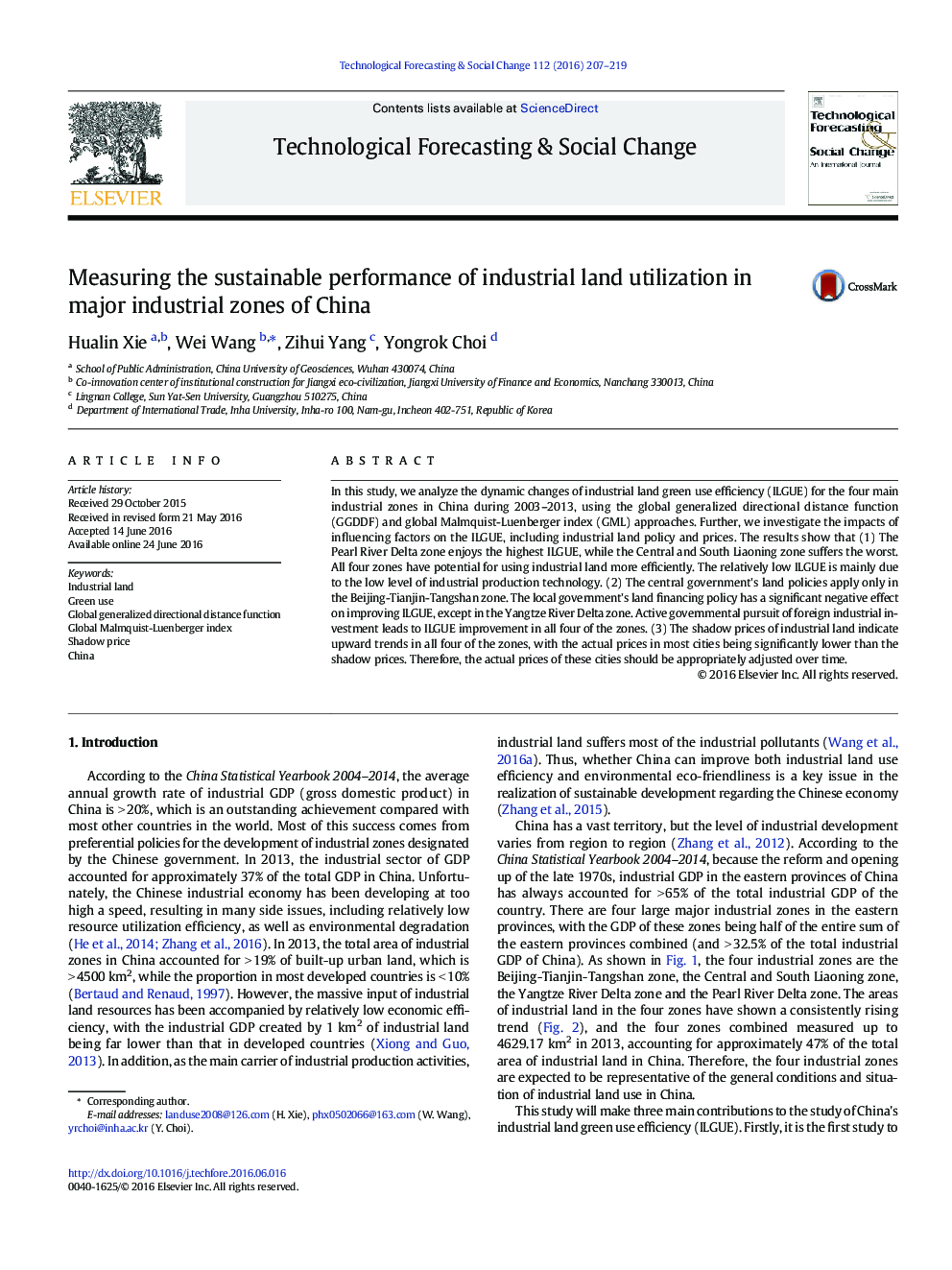| Article ID | Journal | Published Year | Pages | File Type |
|---|---|---|---|---|
| 5037232 | Technological Forecasting and Social Change | 2016 | 13 Pages |
â¢The total factor industrial land green use efficiency is investigated for major industrial zones in China.â¢The global generalized directional distance function and global Malmquist-Luenberger index are proposed.â¢The shadow price of industrial land is computed.â¢The impacts of influencing factors on the industrial land green use efficiency are investigated.
In this study, we analyze the dynamic changes of industrial land green use efficiency (ILGUE) for the four main industrial zones in China during 2003-2013, using the global generalized directional distance function (GGDDF) and global Malmquist-Luenberger index (GML) approaches. Further, we investigate the impacts of influencing factors on the ILGUE, including industrial land policy and prices. The results show that (1) The Pearl River Delta zone enjoys the highest ILGUE, while the Central and South Liaoning zone suffers the worst. All four zones have potential for using industrial land more efficiently. The relatively low ILGUE is mainly due to the low level of industrial production technology. (2) The central government's land policies apply only in the Beijing-Tianjin-Tangshan zone. The local government's land financing policy has a significant negative effect on improving ILGUE, except in the Yangtze River Delta zone. Active governmental pursuit of foreign industrial investment leads to ILGUE improvement in all four of the zones. (3) The shadow prices of industrial land indicate upward trends in all four of the zones, with the actual prices in most cities being significantly lower than the shadow prices. Therefore, the actual prices of these cities should be appropriately adjusted over time.
